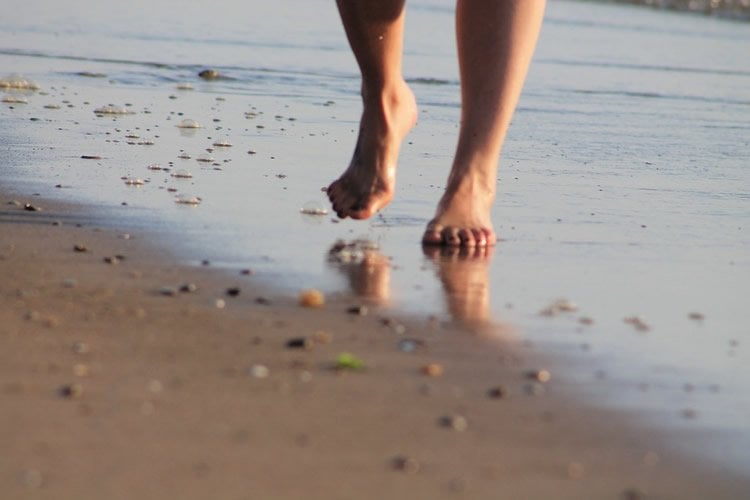Running barefoot is better than running with shoes for your working memory, according to a new study published by researchers at the University of North Florida.
The experiment, designed by lead researcher Dr. Ross Alloway, undertaken with Dr. Tracy Alloway, associate professor, both from the Department of Psychology at UNF, and Dr. Peter Magyari, associate professor in the Department of Clinical and Applied Movement Sciences at UNF, is the first to show that running barefoot leads to better cognitive performance than running with shoes.
Working memory, our ability to recall and process information, is used throughout our lifespan. By improving it, we may be able to realize gains in key areas, from school to work to retirement.
“Working memory is increasingly recognized as a crucial cognitive skill, and these findings are great news for people looking for a fun way to boost their working memory,” said Tracy Alloway.
The UNF researchers enlisted 72 participants between the ages of 18 and 44, who ran both barefoot and wore shoes at a comfortable, self-selected pace for approximately 16 minutes. Working memory was measured before and after running.
The results of this research, just published in Perceptual and Motor Skills, found a significant increase—approximately16 percent—in working memory performance in the barefoot-running condition. There was no significant increase in working memory when running with shoes. Additionally, the speed and heart rate of the participants was measured but neither was found to have any impact on working memory performance.
“The little things often have the greatest impact. This research shows us that we can realize our cognitive potential and enjoy ourselves at the same time,” said Ross Alloway. “If we take off our shoes and go for a run, we can finish smarter than when we started.”

When running barefoot, one often has to avoid stepping on potentially hurtful objects by using precise foot placement. As a result, study participants were required to step on flat objects to simulate running barefoot in an outdoors context. Though participants stepped on the flat objects with shoes and barefoot, only the barefoot condition saw improvements in working memory.
According to Ross Alloway, it’s possible that the barefoot condition required a more intensive use of working memory because of the extra tactile and proprioceptive demands associated with barefoot running, which may account for the working memory gains.
Source: Joanna Norris – University of North Florida
Image Source: The image is in the public domain.
Original Research: Abstract for “An Exploratory Study Investigating the Effects of Barefoot Running on Working Memory” by Ross G. Alloway, Tracy Packiam Alloway, Peter M. Magyari, and Shelley Floyd in Perceptual and Motor Skills. Published online April 2016 doi:10.1177/0031512516640391
Abstract
An Exploratory Study Investigating the Effects of Barefoot Running on Working Memory
The aim of the present study was to compare the potential cognitive benefits of running barefoot compared to shod. Young adults (N = 72, M age = 24.4 years, SD = 5.5) ran both barefoot and shod on a running track while stepping on targets (poker chips) and when not stepping on targets. The main finding was that participants performed better on a working memory test when running barefoot compared to shod, but only when they had to step on targets. These results supported the idea that additional attention is needed when running barefoot to avoid stepping on objects that could potentially injure the foot. Significant increases in participant’s heart rate were also found in the barefoot condition. No significant differences were found in participants’ speed across conditions. These findings suggested that working memory may be enhanced after at least 16 minutes of barefoot running if the individual has to focus attention on the ground.
“An Exploratory Study Investigating the Effects of Barefoot Running on Working Memory” by Ross G. Alloway, Tracy Packiam Alloway, Peter M. Magyari, and Shelley Floyd in Perceptual and Motor Skills. Published online April 2016 doi:10.1177/0031512516640391







